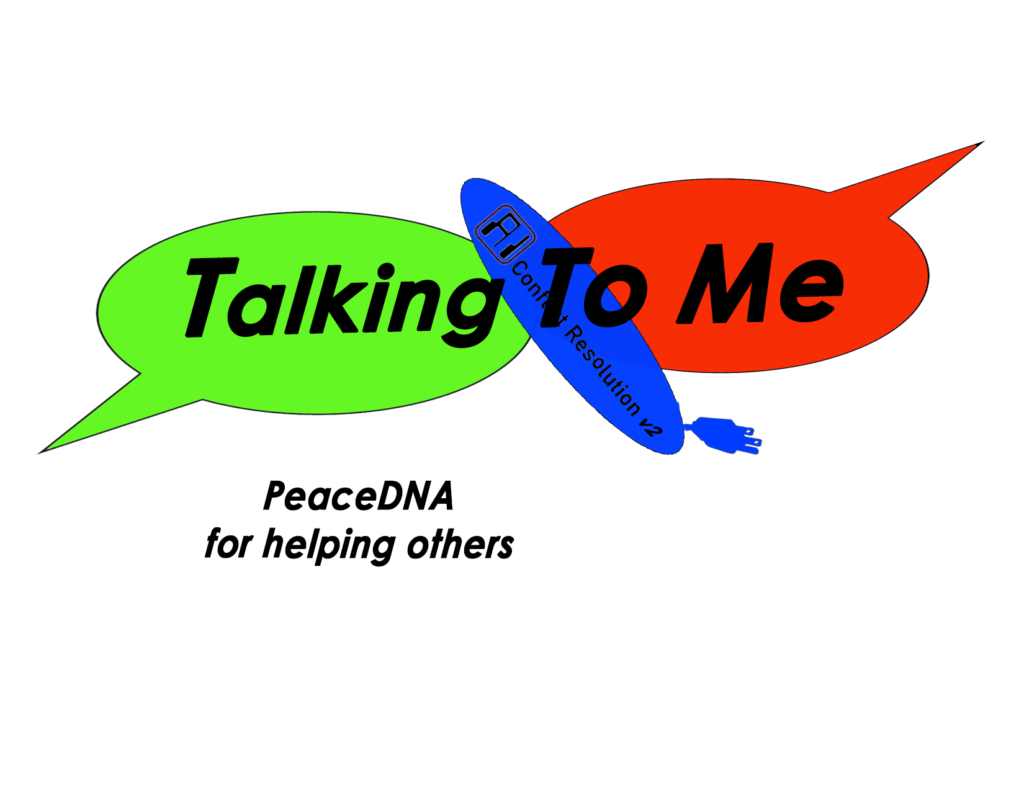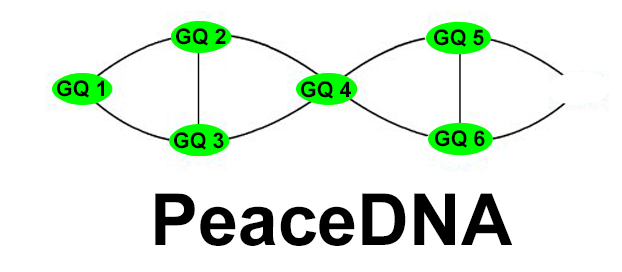PeaceDNA
The idea of Conflict Resolution covers various types of conflicts, each with its own structure, terminology, and ecosystem (Rules of the Road). One size does not fit all. Person-to-person conflict (P2PConflict) specifically refers to two opposing sides meeting, each having a problem with the other. It is broad and has a great deal of occurrence in day to day life. It is the focus of this work and is the domain of PeaceDNA.
PeaceDNA is a P2PConflict resolution playbook comprised of 6 Guiding Questions (GQ) organized into 3 Steps. Each GQ is designed to track what is happening within the 3 Steps and provide directions for the next course of action. The system is designed to recognize, guide, and promote P2PConflict resolution from start to finish.
A Safe & Common Language
(Read carefully)
Let’s start by clarifying some essential terms: PROBLEM, P2PCONFLICT, and FOUL. While we don’t need to know their precise definitions, it’s crucial to understand how they relate to each other and form an ecosystem, a ‘Rules of the Road’, when it comes to the ‘pecking order’ of things.
Problem
Throughout our lives, we encounter various types of Problems. Some Problems are real while others are not. Some issues can be resolved, while others cannot. Sometimes, individuals encounter a challenging situation wherein they desire something from someone else, but they are denied it. This is the definition of Problem in the world of P2PConflict, PeaceDNA.
It is possible that someone’s offensive behavior or approach to Problem-solving can trigger defensiveness in others, which then can become a Problem itself. Now there is P2PConflcit which means 2 Problems meeting. Btw, if someone desires to feel safe, be left alone, have their personal space respected, or convince someone of something, but they are not getting it, then that also can be a Problem.
P2PConflict
When two Problems meet, a conflict can arise, even if there is no solution. A P2PConflict happens when two people, each with a Problem, meet, even if the Problems are unrelated or imagined.
This means obviously that every P2PConflict has at least 2 sides. Each side deserves to be heard and respected, and each has their own set of facts, feelings, and opinions that contribute to their point-of-view (POV). Another consideration is that resolving conflicts peacefully takes more time because there is more then one side to be considered. Further, there is often a feeling of rush & urgency counter-productive to taking more time to resolve properly. Time, the very thing we need more of: Patience.
FOUL
A FOUL is any action that intends to hurt, harm, or intimidate, regardless of how violent or passive it is. Regardless of the reason, whether in self-defense or just being mean-spirited, FOULs are counter-productive in P2PConflicts that aim for resolution. FOULs are the bully’s language.
Making negative and unjustified comments can be perceived as an act of aggression, leading to more defensiveness. It can be difficult to avoid responding defensively and can trigger defensiveness in others involved, like a cancer.
Also, sometimes people can certainly be rude without intending to hurt, harm, or intimidate. Without that intention, it is not a FOUL even if taken as mean-spirited, reckless, or demeaning. Rude behavior is just thoughtless, not a FOUL.
To be clear, the determination of a FOUL is based on the intent behind the action, rather than the action itself. While any violent act is considered a FOUL, not all FOULs involve violence. Any individual who is committing a FOUL is essentially engaging in bullying behavior. It is the intention to commit a FOUL that defines bullying, regardless of any Problem behind it, or not.
When confronted with a Problem, some individuals tend to use FOULs as a go-to move. This approach frequently results in the other person becoming defensive, which now create Problems for both sides involved. Here, 2 opposing parties are facing conflict due to the actions of a single individual. This is P2PConflict.
Summary
We have created a vocabulary with clear and precise definitions of the terms Problem, P2PConflict, and FOUL. It is crucial to remember that P2PConflict refers to a situation where there are two complete sides to the story that need to be considered, not just one. PeaceDNA aims to provide guidance on how to address, navigate and diagnose P2PConflict.
In addition, we understand that committing a FOUL can shift focus and create defensiveness when attempting to resolve P2PConflicts. FOULing, even alone, can create a Problem of defensiveness.
It is important to recognize and accept that a person who engages in bullying behavior is someone who purposely and unfairly mistreats others, regardless of any valid reason or underlying problem. Bullying can occur in various settings, whether it be by a stranger, a family member, a boss, or a teacher, and it is always characterized by the intention to hurt, harm, or intimidate.
It is time to learn PeaceDNA so that we can assist others who are in P2PConflict and desire to reach a peaceful resolution. The primary difference between helping others and helping oneself is in managing FOULs and exploring the other POV.

